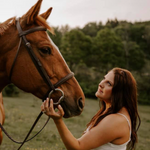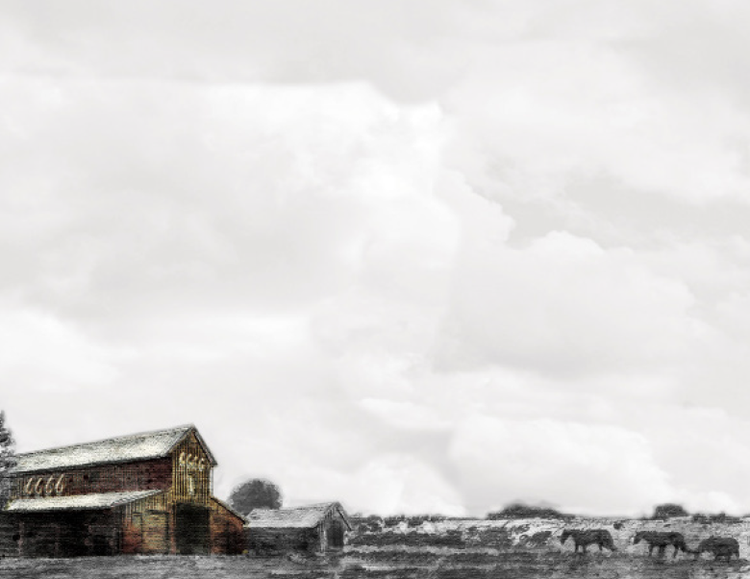In western horsemanship classes today, horse and rider must complete a set pattern of maneuvers at the walk, trot, and lope. These patterns and classes are meant to test a rider's horsemanship ability.
But what exactly does “horsemanship” really mean, and how did it become what it is today?
While the methods of horsemanship have evolved over time, at its core, horsemanship boils down to one thing – training horses how to become our partners in a mindful way that they understand.
The History of Horsemanship Training
For past generations, horsemanship was a skill that sometimes made the difference between surviving or not.
The Mesopotamians, dating from around 2000 BC, are some of the earliest riders we know of according to archaeological findings.
However, some of the earliest known riders who trained harmoniously with their horses were the ancient Greeks. The Greeks viewed horses for the emotional and intelligent creatures they are.
While horsemanship has been around a very long time, it’s the cowboy era that began to really define horsemanship and horse training as we recognize it today.
Equine psychology, horse behavior, the basic principles of pressure-release, and positive reinforcement are methods we see today that can be traced back to this era. While cowboys worked with whatever generational wisdom and firsthand horse training experience they had at the time, these principles of working with a horse as a partner on their ranch were certainly the beginnings of true horsemanship.
Tom and Bill Dorrance, specifically, are heavily credited with many of these modern-day way of life western horsemanship training methods established in the early to mid 1900’s.
“By studying their actions and reactions, I have been helped to understand how to present myself in such a way that the horses will respond to what I may ask of them. This, I believe, is true nature,” Tom Dorrance once said.
The Basics of Horsemanship Principles
“There are a lot of people who know how to start a horse and put a foundation on that horse, but many do not understand how to take that foundation and build on it to make what’s called a handy horse. Building on that foundation takes ‘feel’ from the rider, and the message being received creates a willing response from the horse to accomplish the job that is placed before him,” said Four Sixes Ranch Manager Joe Leathers.
For most riders, it’s fairly easy to “feel” when you and your horse are perfectly in sync, and that you have accomplished horsemanship, and in turn, rideability.
However, good horsemanship is not something you can simply “do” once and expect results. Instead, it’s a program - it’s repetition that allows a horse’s mind to understand what you are asking of them over time. It requires not only dedication and a deep understanding of horse behavior, but also endless patience as you are trying to communicate what you want to your horse in a way they understand.
But when you do have that connection with your horse’s mind through these horsemanship practices, and that horse finally understands exactly what you are asking of them, you also have seemingly effortless control over the horse’s body that allows them to then become your partner. When this happens, as Leathers mentioned, you then have a handy horse.
No matter what discipline, teaching a horse through pressure and release is one of the most important concepts of horsemanship and helping your horse understand what you want during training.
With this pressure and release method, timing is everything. Riders need to be aware at which moment to apply pressure and when to release.
An example of this is when you ask your horse to trot forward. You release that leg aid pressure the moment your horse moves into the higher gait.
Since pressure is viewed as a “negative” to horses, after you release the pressure when they respond correctly, it becomes a positive association with that specific pressure/release and aid.
Anytime you are riding, be mindful of every pressure/release you are giving your horse as this can be the difference between teaching them and confusing them.
Horse Behavior and Psychology
The understanding of horse behaviors is imperative for true horsemanship.
Without understanding how a horse thinks and behaves, it’s nearly impossible to accomplish proper horsemanship.
For example, knowing when your horse is becoming overly stressed, or when he may be in discomfort, is vital when working with horses. If a horse is in complete “flight” mode, the odds of him retaining the information you are teaching him are low. If the horse is suffering from ulcers and is in discomfort from this, for example, this is also something that will negatively impact a horse's training and learning experience.
It’s also important to remember that horses are social creatures and have a herd mentality which impacts their behavior and reactions.
By understanding horse body language, and how horses interpret human body language, you can prevent unnecessary confusion between you and your horse. Sometimes we may not even realize the interpretation horses create from our body language or how this can affect our horsemanship overall.
Clear communication and being mindful of what your body language and emotional state may be telling your horse subconsciously affect your horse’s response when working with them both in and out of the saddle.
Four Sixes Ranch Horsemanship Clinics
“Horsemanship is not just a skill - it’s a way of life.”
At the Four Sixes Ranch, a three-day horsemanship clinic is held several times a year and teaches riders from all over what this motto truly means and every aspect of horsemanship.
Led by Four Sixes Ranch General Manager Joe Leathers, the clinic helps riders hone these horsemanship skills to new levels.
Leathers and his team of experienced 6666 Ranch cowboys help clinic participants develop a feel for timeless horsemanship on this iconic ranch that has such a rich horse heritage.
To learn more about the 6666 Ranch Horsemanship Clinics, click here.
Photo by Bailey Alexander on Unsplash


